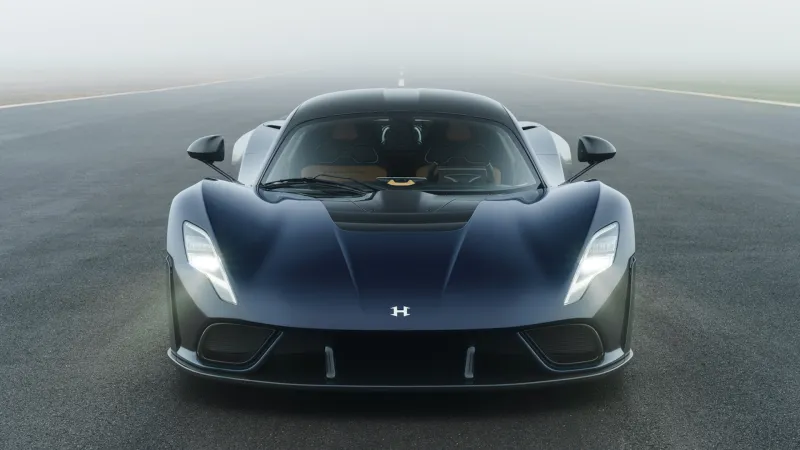During testing of its newest hypercar, the Venom F5, Texas-based Hennessey Performance, which is renowned for pushing the boundaries of automotive performance, recently had a major mishap. A new aerodynamic arrangement was being validated by the corporation through high-speed experiments, with a target speed of 250 mph. A constant goal in the automobile industry is to increase speed, agility, and aerodynamic efficiency, and this big project represents that pursuit.

However, there are significant risks associated with pursuing speed with hypercars and supercars. Testing new prototypes at high speeds is essential for manufacturers such as Hennessey Performance in order to verify performance promises and guarantee safety requirements. In addition to verifying acceleration capabilities, these tests assess the vehicle’s handling characteristics under extreme stress, taking into account downforce and aerodynamics.

On the day of the incident, as detailed by company founder John Hennessey in a social media post, the Venom F5 prototype was demonstrating strong acceleration. Yet, an unexpected downforce issue arose, causing the test driver to lose control of the hypercar. Despite the severity of the incident, John Hennessey expressed gratitude that the driver emerged unharmed. The incident underscores the unpredictable nature of high-speed testing and highlights the importance of stringent safety protocols in such endeavors.
For Hennessey Performance and other manufacturers, the pursuit of speed and performance is not merely about achieving bragging rights or setting records. It’s about pushing the boundaries of engineering and design, often involving cutting-edge technologies and materials. Hypercars like the Venom F5 represent the pinnacle of automotive innovation, where every component, from the engine to the aerodynamic elements, is meticulously engineered to maximize performance without compromising safety.
The Venom F5, in particular, has been touted for its exceptional power and speed capabilities. With a bespoke twin-turbocharged V8 engine producing over 1,800 horsepower, it’s designed to accelerate from 0 to 60 mph in under 2 seconds, showcasing the culmination of years of research and development in automotive engineering. Such performance figures not only captivate enthusiasts but also underscore the technical prowess required to harness such immense power safely.
In the realm of hypercars, aerodynamics play a crucial role in achieving and maintaining high speeds. The incident during the Venom F5 testing highlights how even minor aerodynamic disturbances can have significant consequences at extreme velocities. Engineers and aerodynamicists meticulously design and test these elements in wind tunnels and on tracks to ensure stability and control, yet real-world conditions can still present unforeseen challenges.
John Hennessey’s acknowledgment of the incident and appreciation for first responders and onsite staff reflect the automotive industry’s commitment to safety amid relentless innovation. It’s a reminder that behind the glamour of high-performance vehicles lies a rigorous process of testing, iteration, and refinement aimed at mitigating risks and ensuring driver safety.
Beyond the technical aspects, incidents like these prompt reflections on the broader implications of speed and performance in automotive culture. Hypercars and supercars occupy a unique space in popular imagination, symbolizing technological prowess and automotive excellence. Yet, they also provoke discussions about environmental impact, fuel efficiency, and the sustainability of high-performance automotive technologies in an era increasingly focused on electric vehicles and carbon neutrality.

The pursuit of speed in hypercars also resonates with historical precedents in automotive racing, where manufacturers have continually pushed the boundaries of what’s possible on the track and on the road. Innovations born from racing have often found their way into mainstream automotive technology, driving advancements in safety, efficiency, and performance that benefit everyday drivers.

The incident that occurred during the Venom F5 testing by Hennessey Performance highlights the continuous quest of quality and innovation in the hypercar sector, while also serving as a reminder of the perils associated with high-speed automobile testing. Thanks to their dedication to engineering excellence and love of automobile performance, manufacturers like Hennessey Performance are pushing the boundaries of what is feasible. The drive for speed and performance in hypercars will surely remain a driving factor in the automobile industry’s ongoing narrative of innovation and achievement as safety standards and technology advance.
If you like the article please follow on THE UBJ.

